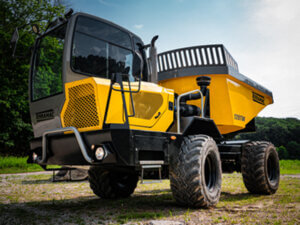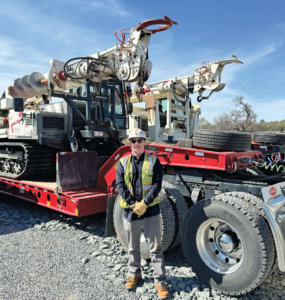It is estimated that nearly half of the limestone used in the construction of Colorado Springs was mined from the Pikeview Quarry that opened in 1903 on the city’s northwest side. It’s an easy landmark to identify with its distinctive scar that can be seen for miles, the result of millions of tons of limestone harvested during 115 years of operation that ended in 2018.
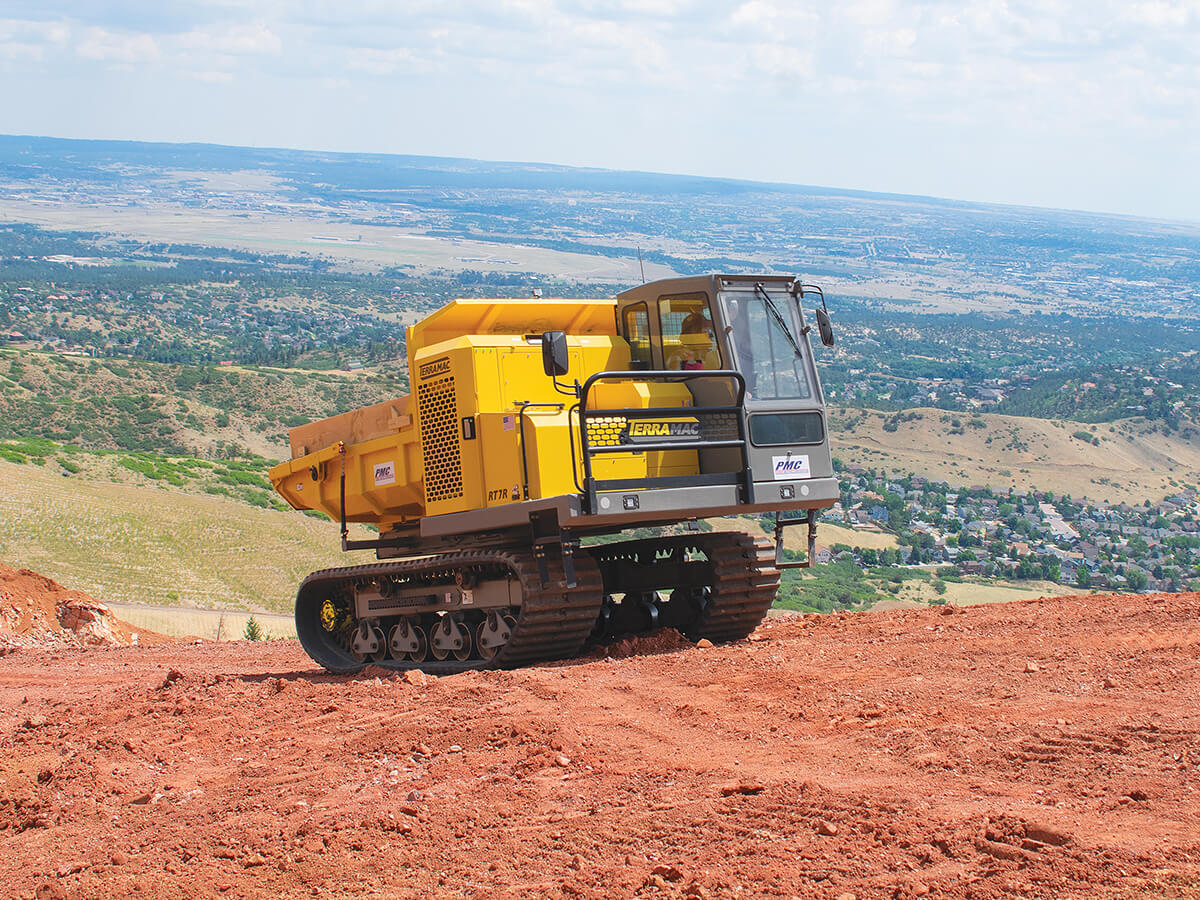
Castle Aggregates — formerly Castle Concrete — has overseen operations since 1972 and is currently reclaiming the 100-acre site in hopes of restoring it and turning the area over to the city of Colorado Springs for potential recreational use in the future. Due to a massive slide involving millions of tons of material in 2008, it was not a straightforward process. A three-phase plan was implemented, starting with backfilling at the bottom of the quarry and installing a drainage system to stabilize the mountain, followed by the construction of a 150-foot slope, the planting of more than 31,000 trees and shrubs, and the spreading of topsoil to cover the scar.
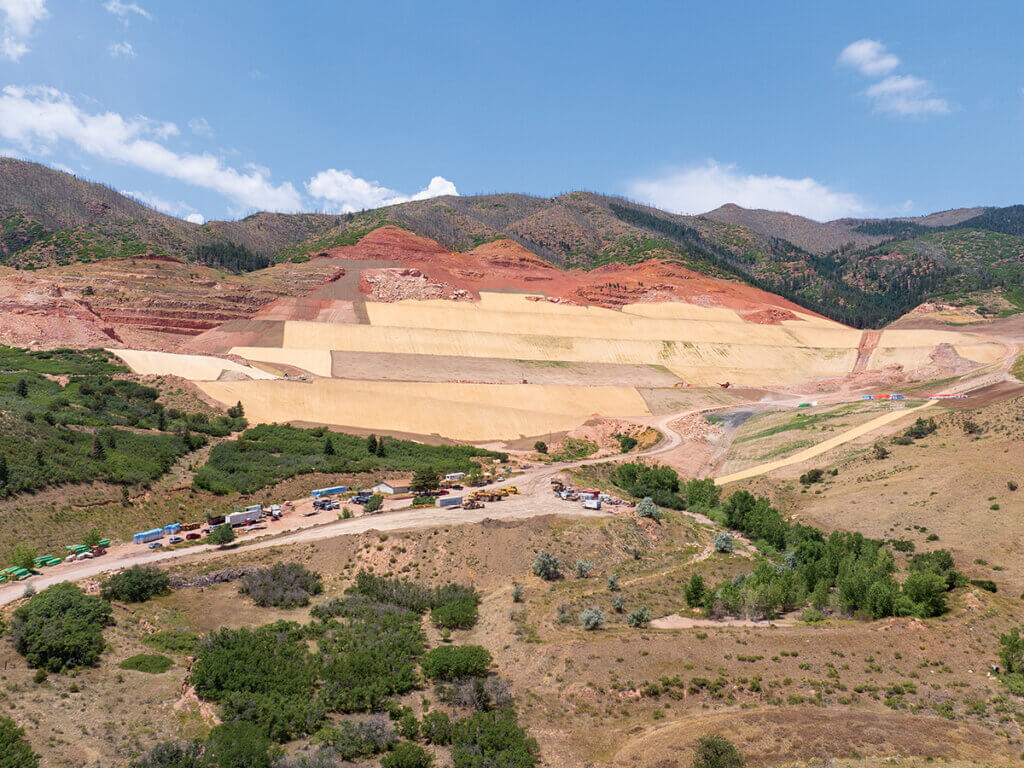
“We are currently bringing in 3.4 million cubic yards of dirt, compacting it and shaping into a buttress in front of the slide, so it basically traps the rubblized limestone that was moving, buries it in the side of the mountain, and allows water flowing through the mountain to flow out,” explained Castle Aggregates President Jerry Schnabel. “The idea is to eliminate the issue that caused the slide, and our monitoring tells us that our plan is working. Now, we’re also doing the planting, placing the topsoil and will soon be lining ditches with riprap.”
Castle Aggregates is hauling the nearly 3,000 yards of topsoil and 7,000 yards of riprap with Terramac RT7R and RT6 crawler carriers that the company rented from local dealer Power Motive Corp. Schnabel emphasized that with steep, narrow bench roads, the Terramac units were the ideal choice.
“Trucks were not feasible,” Schnabel said. “We looked at using skid steers, but that would have been terribly inefficient to carry a bucket of material at a time down a 2,000-foot road. Wheel loaders were also a thought, but you need to have 50 or 60 feet of width to make a six-point turn. Kevin showed us the Terramac crawler carriers, and we set up a demo. The maneuverability and ability to work in some tight spaces really stood out.”
Appreciate the Ease of Operation
Veteran operator Cindy Penn runs the RT7R, which has a 14,000-pound carrying capacity. The upper structure rotates a full 360 degrees, allowing Penn to dump at any angle.
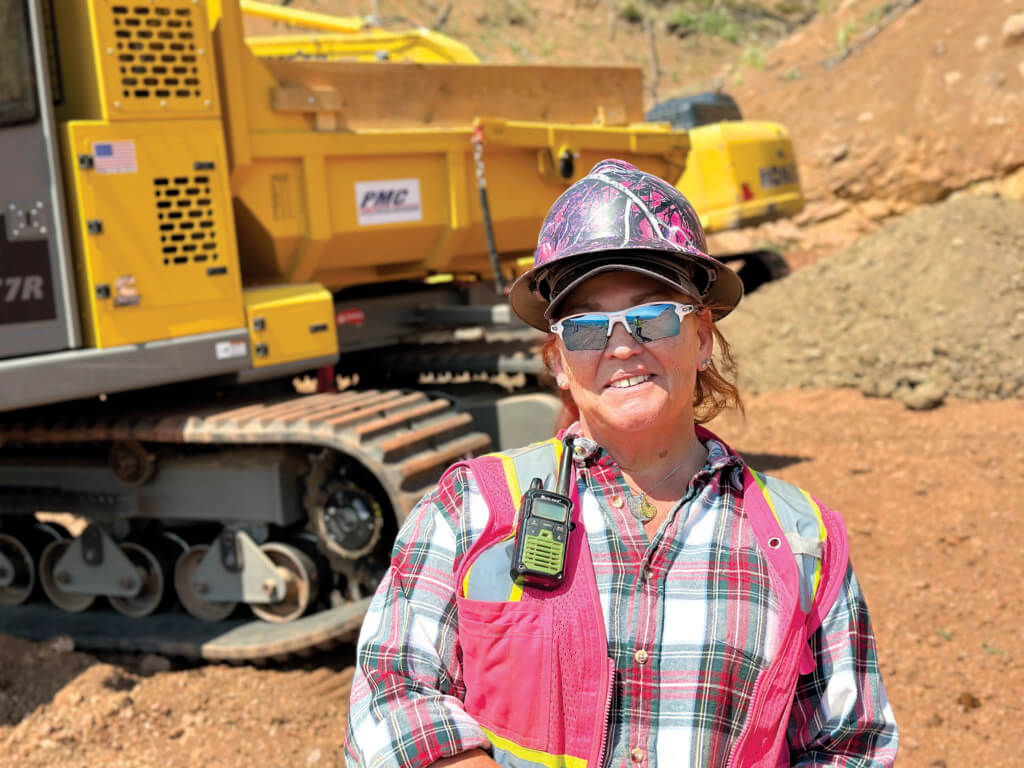
“The advantage is that I can get into places where you can’t turn around or backing up could be dangerous,” said Penn, who has experience running articulated trucks, loaders, excavators and other heavy equipment. “With the RT7R, I can drive to the dump location, turn and dump directly over the side of the hill. Then, it’s a matter of turning the cab and driving back to get loaded. It’s much better than trying to do this work with a truck.”
Penn added, “It’s easy to operate. The left joystick controls forward/backward and speed up/slow down. The right is for turn and dump. It’s nice and comfortable too, especially compared to another brand of a similar machine that I ran before.”
Anna Muegge operates the RT6, which has a 12,000-pound carrying capacity. Muegge has only been operating for a few months and said she appreciates the RT6’s ease of operation.
“One joystick controls everything, which is nice because you’re not sitting there looking for toggles to try and figure out what you need to do,” commented Muegge. “Everything is right there in front of me, and the screen is there to monitor things too.”
Muegge continued, “Even though it doesn’t rotate like the RT7R, it still has a small spinning radius, which is very helpful. We don’t have any berms, so it can be scary to be right out on the edge. For me, knowing the machine is going to be able to take me to the dump spot, turn around, and get me out safely with confidence is huge. The stability is great too.”
Versatility Makes Them Popular
Power Motive Corp. Rental and Utility Division General Manager Tres Eichold noted that the Terramac crawler carriers have low ground pressure, which helps operators be more productive and efficient when moving material on steep slopes and other less-than-ideal conditions.
“They are very stable on hillsides and get through soft and muddy ground where trucks just are not an option,” declared Eichold. “Low ground pressure reduces environmental impact too, so they are great for sensitive sites like this. We have a long history of working with Castle, and we’re happy to offer them a solid solution with the Terramac units. It’s a great project to be a part of.”
Eichold added, “Power Motive has been carrying the Terramac line for several years, and we’ve really expanded our reach with them because they are so versatile. In addition to traditional beds, you can mount practically anything on the back of them — digger derricks, concrete chutes and mixers, personnel carriers, and much more. Terramac works with us to make that happen. It gives us and customers excellent support.”
Ahead of Schedule, Proud to Give Back
Schnabel emphasized that he is thankful for the support Power Motive and Terramac have provided Castle Aggregates, including initial training on how to operate the RT7R and RT6. He said Castle Aggregates is ahead of schedule as it closes in on full reclamation.
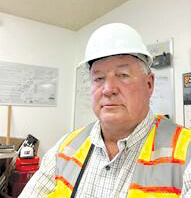
“The Terramac crawler carriers are helping us move forward and hopefully turn the site over to the city in the fall of 2025,” stated Schnabel, noting that the deadline is January 2026. “They have plans to turn it into a park setting with mountain bike trails and other amenities. Our job is to make sure it’s absolutely safe for them to do that.”
Muegge added that she’s proud to have a hand in healing Pikeview Quarry’s scar.
“We moved here in 1997, and the scar on the mountain was pretty much the first thing we saw,” Muegge recalled. “To be a part of restabilizing the mountain and getting rid of the scar is a really cool way to give back to the community.”

